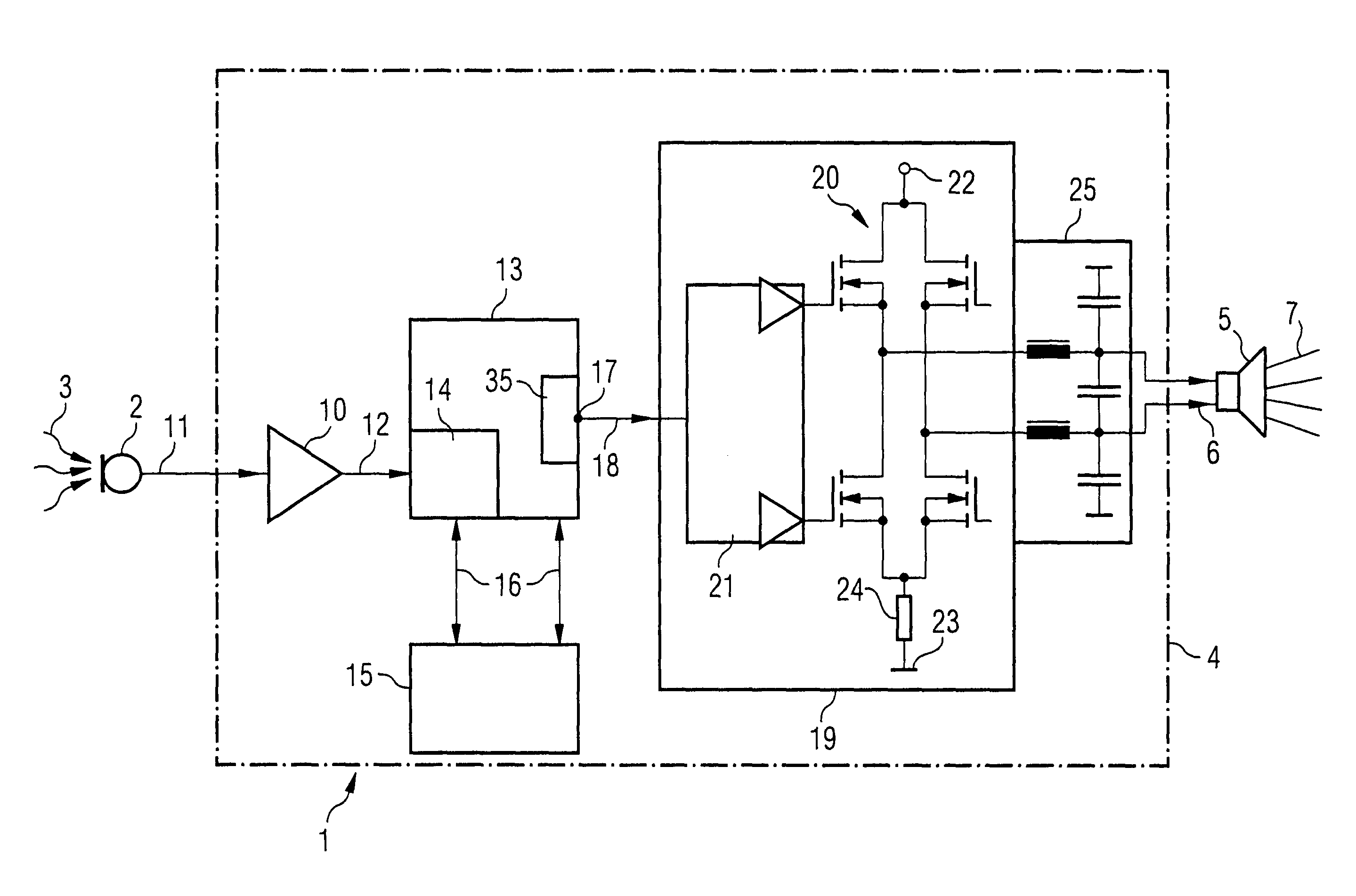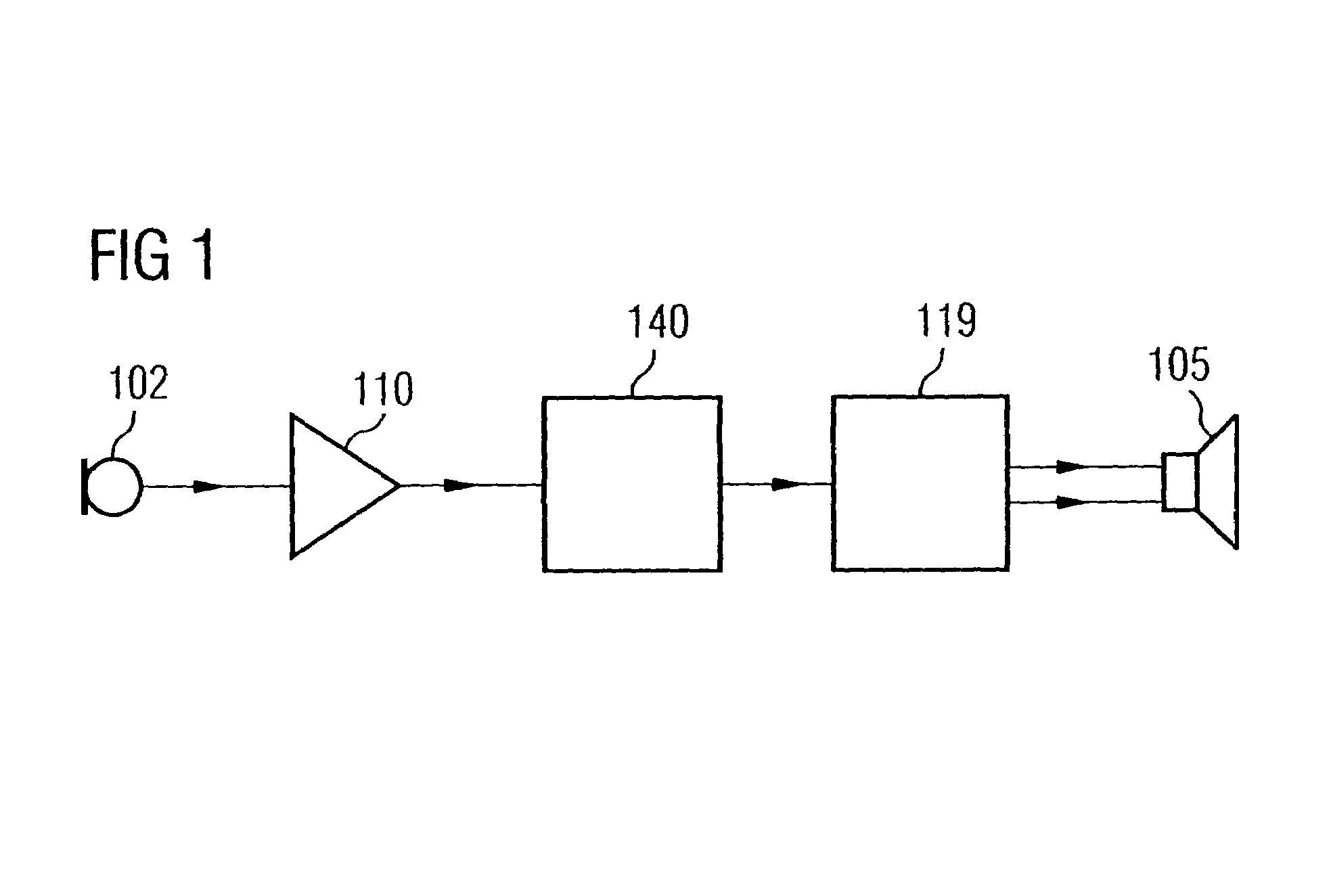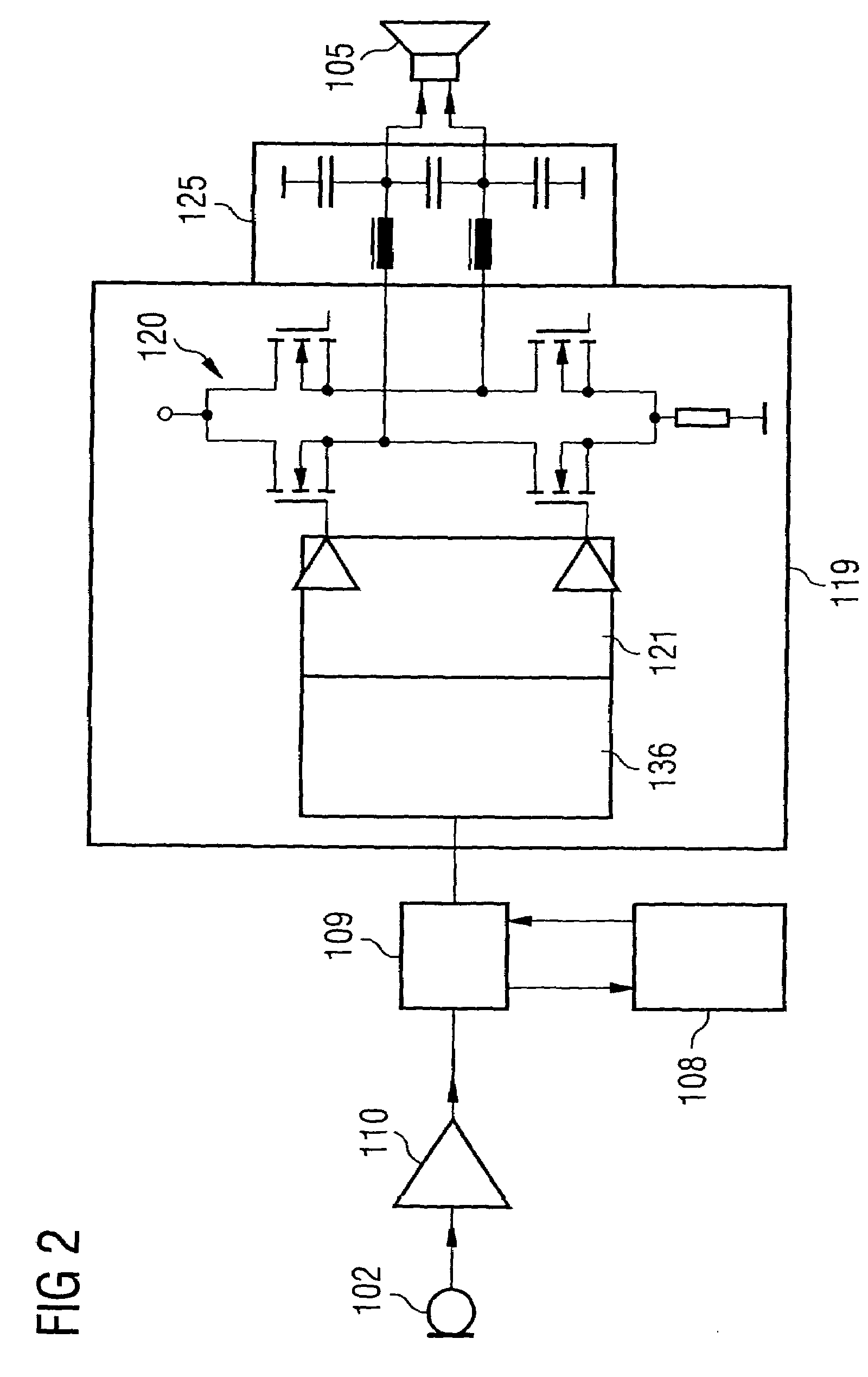Drive circuit, device, and method for suppressing noise, and use
a technology of driving circuit and noise suppression, applied in the direction of machines/engines, fuel intake silencers, instruments, etc., can solve the problems of large space occupation, substantial design problems, and the inability to influence the sound characteristics of engines, so as to reduce circuit-related costs, improve the effect of sound quality and flexibility
- Summary
- Abstract
- Description
- Claims
- Application Information
AI Technical Summary
Benefits of technology
Problems solved by technology
Method used
Image
Examples
first embodiment
[0054]With the aid of a schematic circuit diagram, FIG. 5 shows the implementation of a PWM regulating circuit 35 in circuitry form. The PWM modulator 36 of the PWM regulating circuit 35 contains a ramp generator 50, a comparator 51, a flip-flop 52, and a NAND gate 53. The ramp generator 51 contains a switchable current balancing circuit with the resistor R6 and the transistors T1, T2, an integration capacitor C3, and a resetting transistor T3. The ramp generator 51 is located between the supply terminals 22, 23.
[0055]The NAND gate 53 is connected by means of its first input to the second output 33 of the microcontroller 13. The second input of the NAND gate 53 is connected to the inverting output 38 of the PWM modulator 36. On the input side the PWM signals 34 and Q′ are thus routed to the NAND gate 53. The NAND gate is coupled on the output side to an input of the ramp generator 50. The output of the ramp generator 50 is connected to an input of the comparator 51. The inverted inp...
second embodiment
[0068]With the aid of a circuit diagram, FIG. 7 shows a second embodiment for implementing the PWM regulating circuit 35. In contrast to the embodiment in FIG. 5, the PWM modulator 36, and here in particular the ramp generator 50 for driving the comparator 51, has been implemented more simply in circuitry terms. In contrast to the embodiment in FIG. 5, the current balancing circuit R6, T1, T2 has been replaced by a simple resistor R7 which is connected to the non-inverting output 37 of the flip-flop 52. As a result, the capacitor C1 of the addresser 39 is charged already during the integration phase (Q=HIGH level), whereas the resistor R7 is set to a no-current state (Q=LOW level) when the ramp generator 50 is reset. The ramp voltage generated by the ramp generator 50 now has the form of an exponential charging curve, which is compensated by the regulator 40.
[0069]Although the present invention was described above with the aid of preferred embodiments, it is not restricted to these ...
PUM
 Login to View More
Login to View More Abstract
Description
Claims
Application Information
 Login to View More
Login to View More - R&D
- Intellectual Property
- Life Sciences
- Materials
- Tech Scout
- Unparalleled Data Quality
- Higher Quality Content
- 60% Fewer Hallucinations
Browse by: Latest US Patents, China's latest patents, Technical Efficacy Thesaurus, Application Domain, Technology Topic, Popular Technical Reports.
© 2025 PatSnap. All rights reserved.Legal|Privacy policy|Modern Slavery Act Transparency Statement|Sitemap|About US| Contact US: help@patsnap.com



